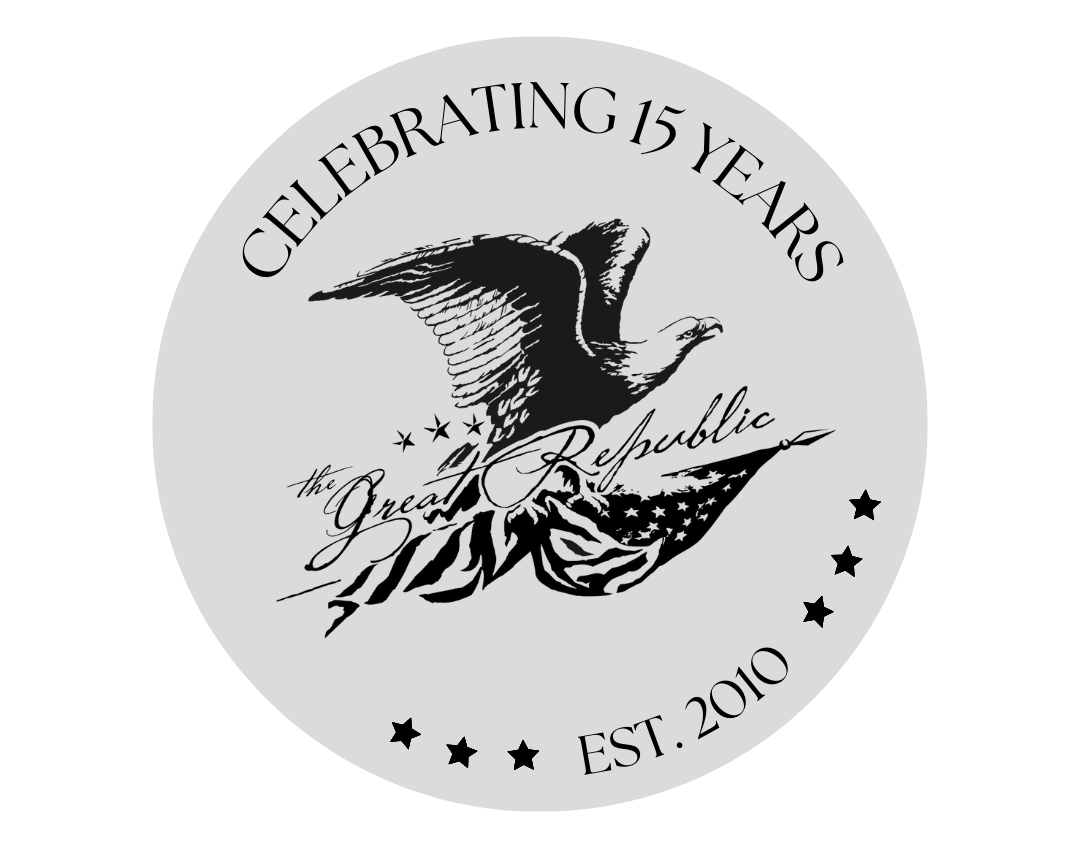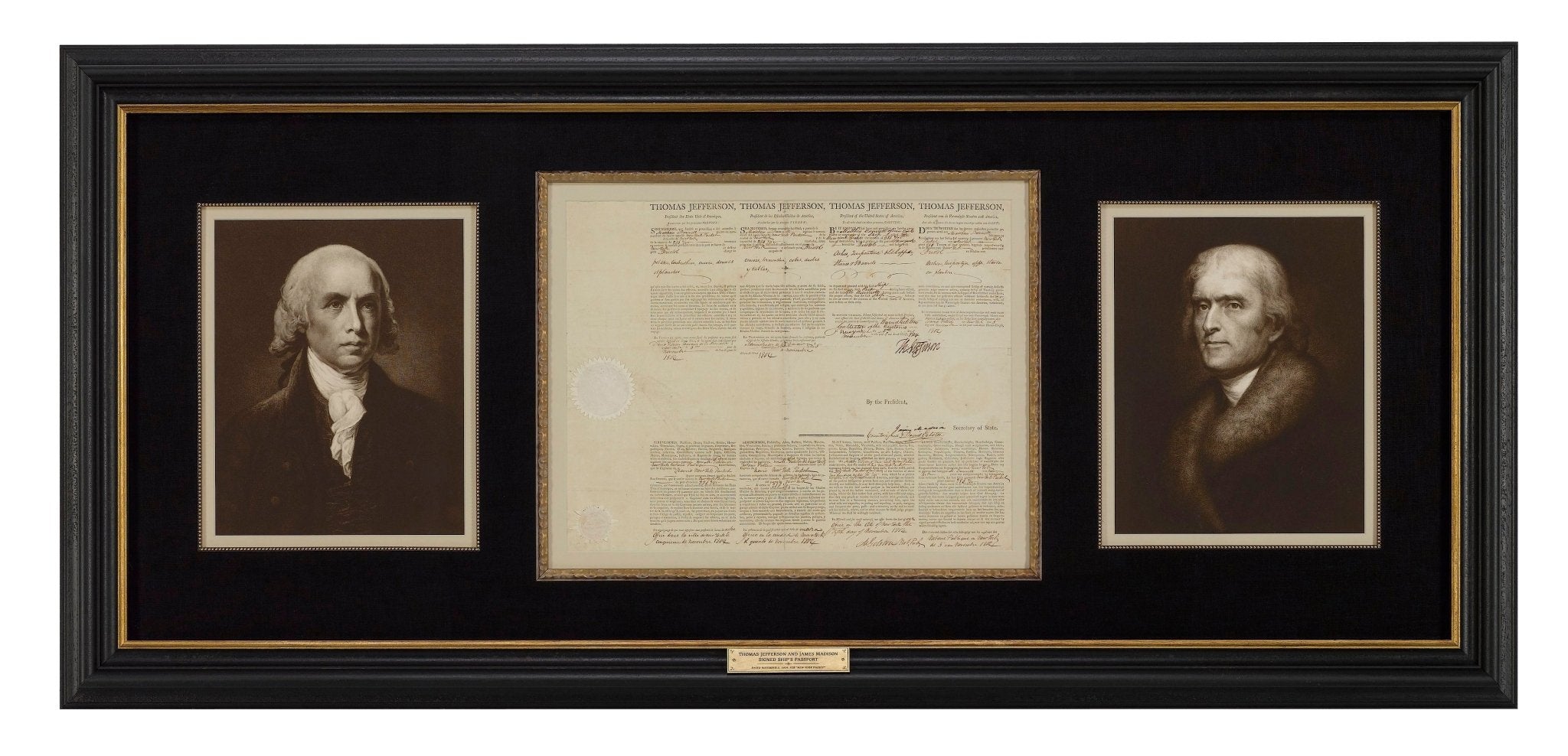
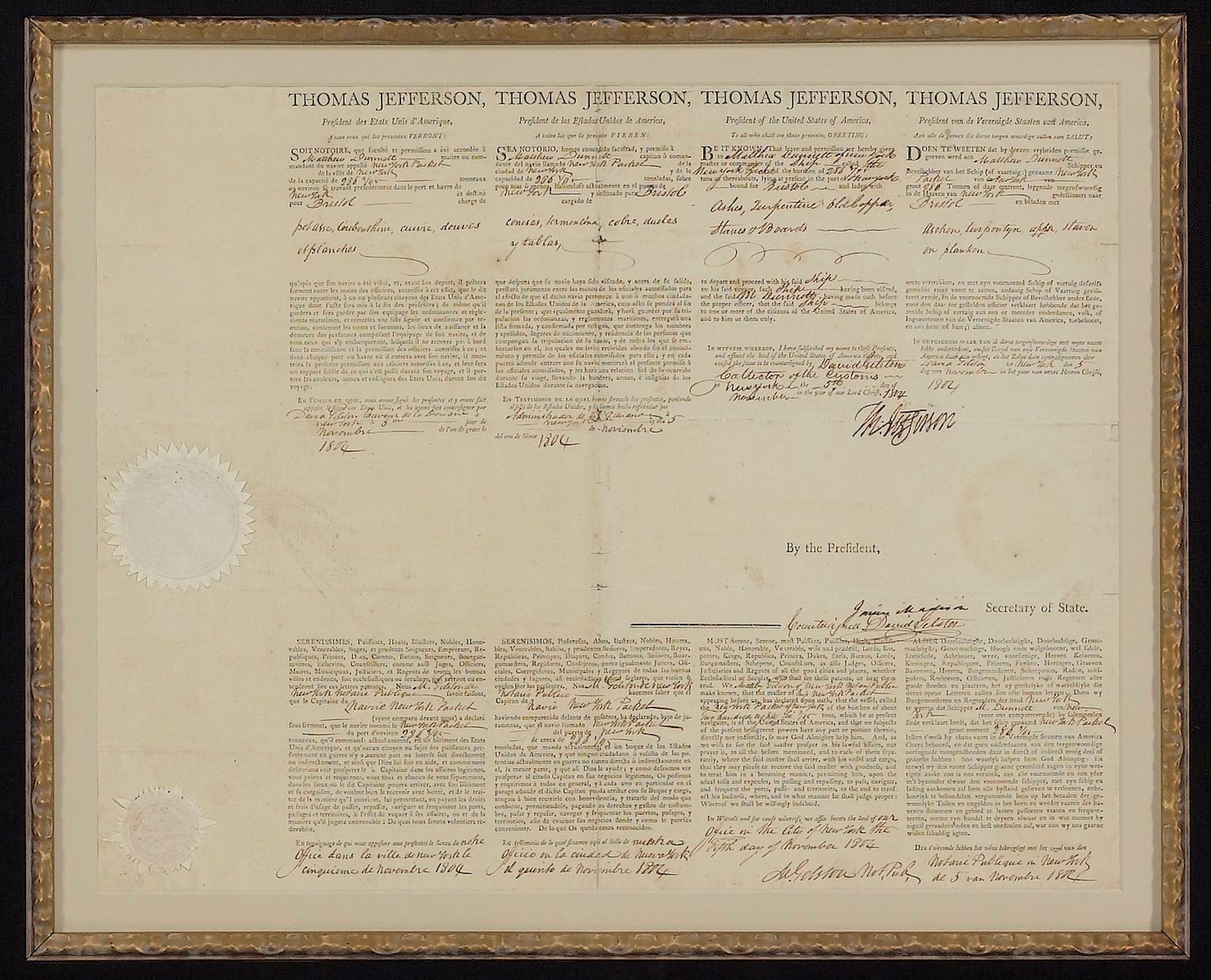
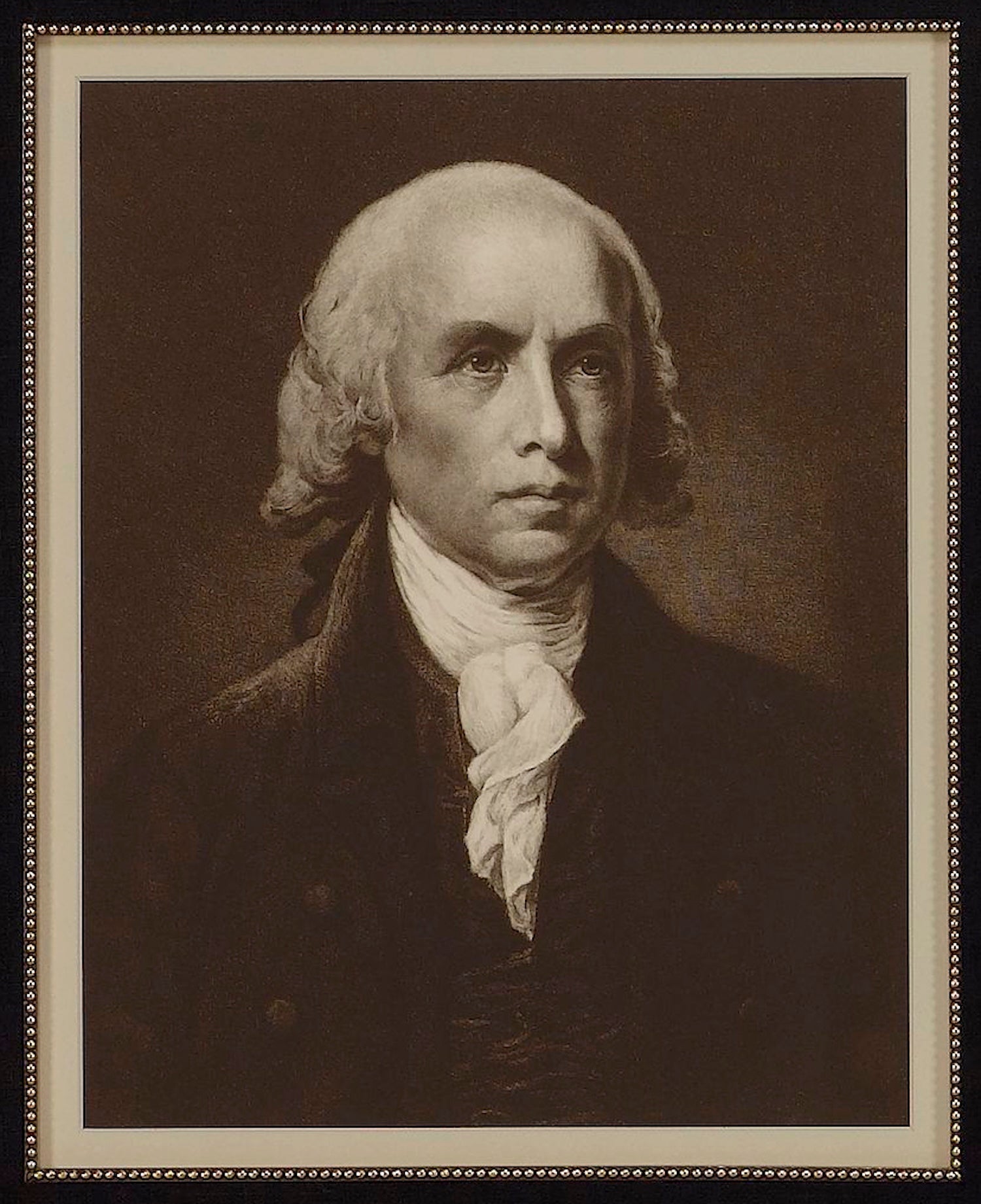
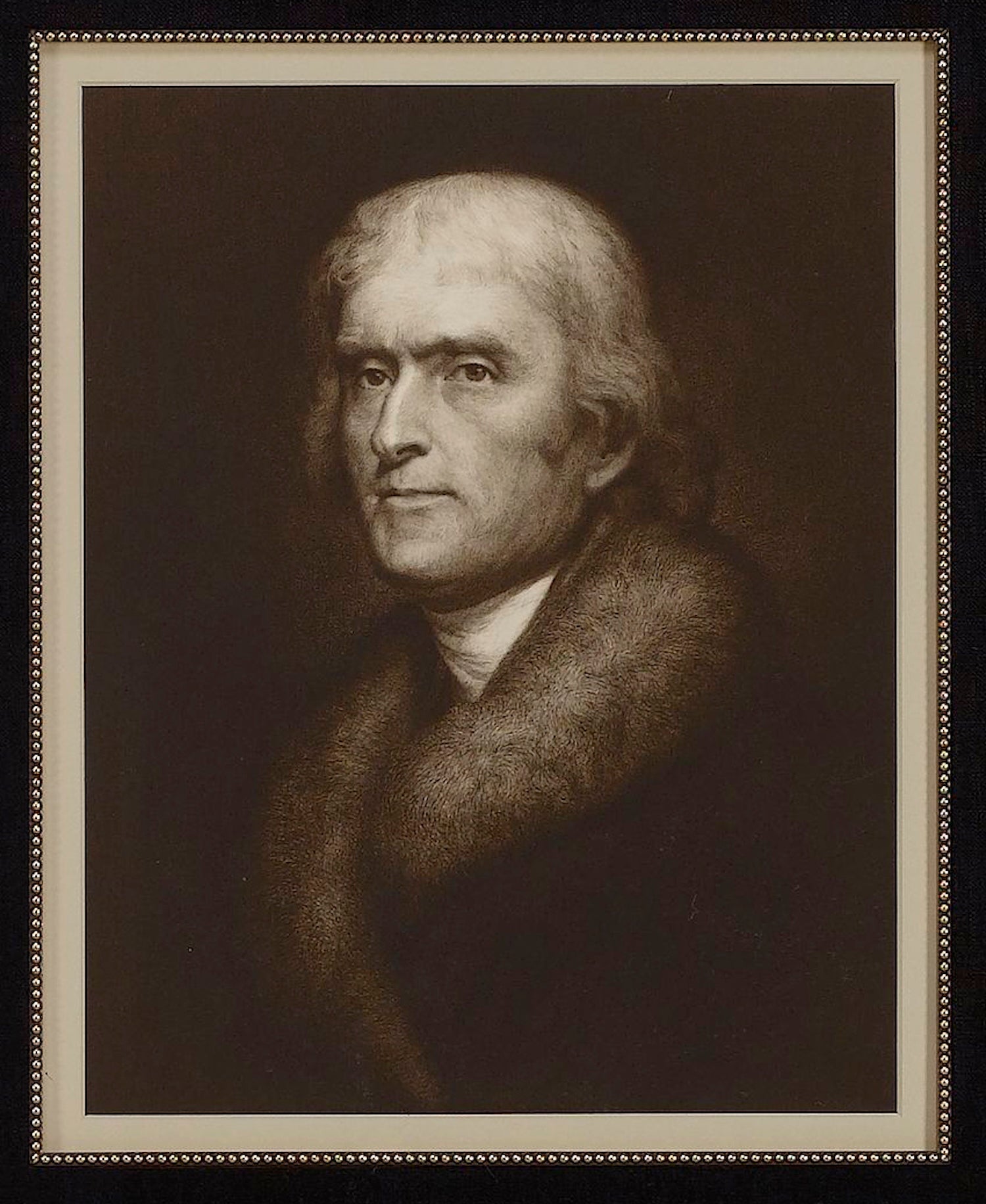
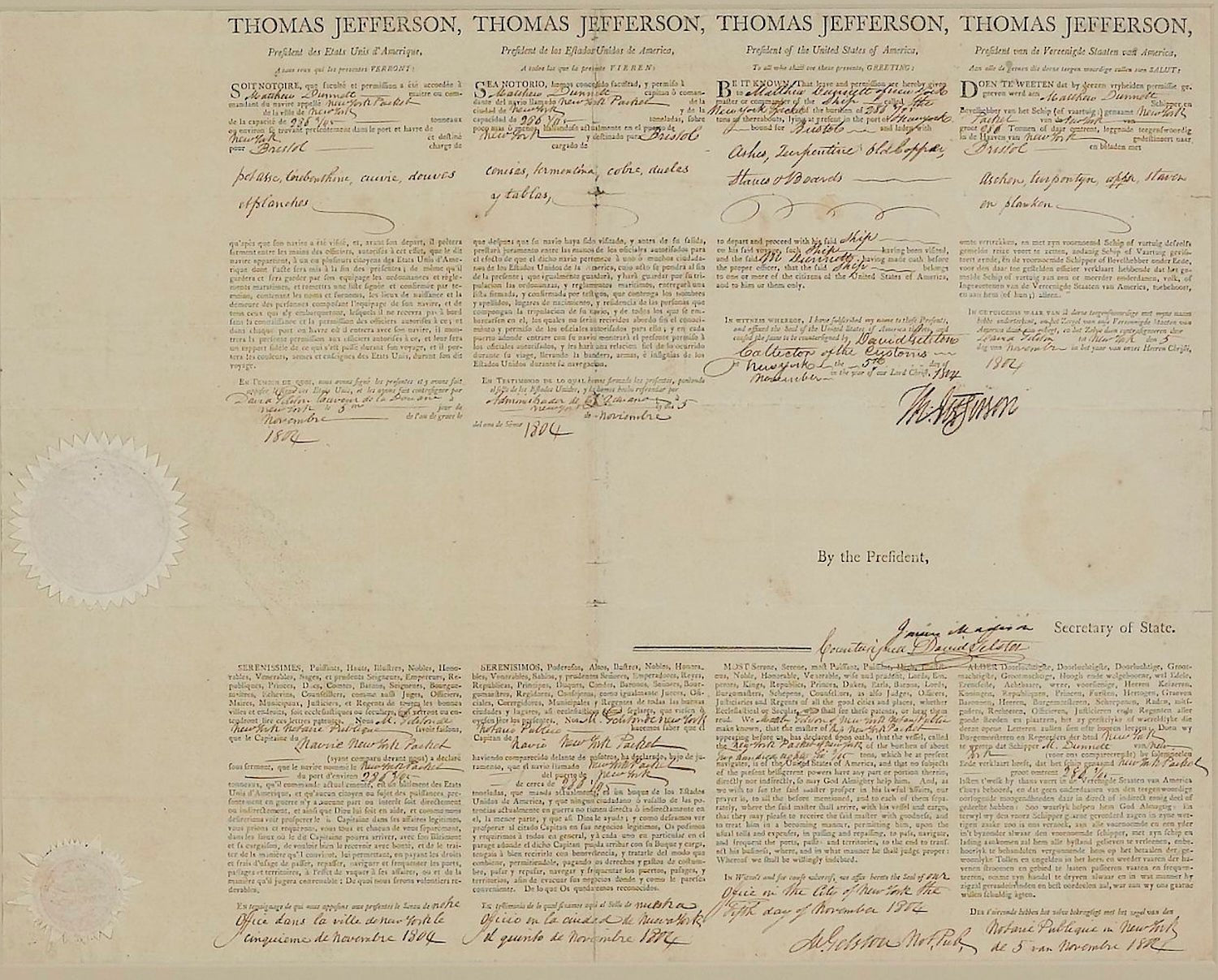
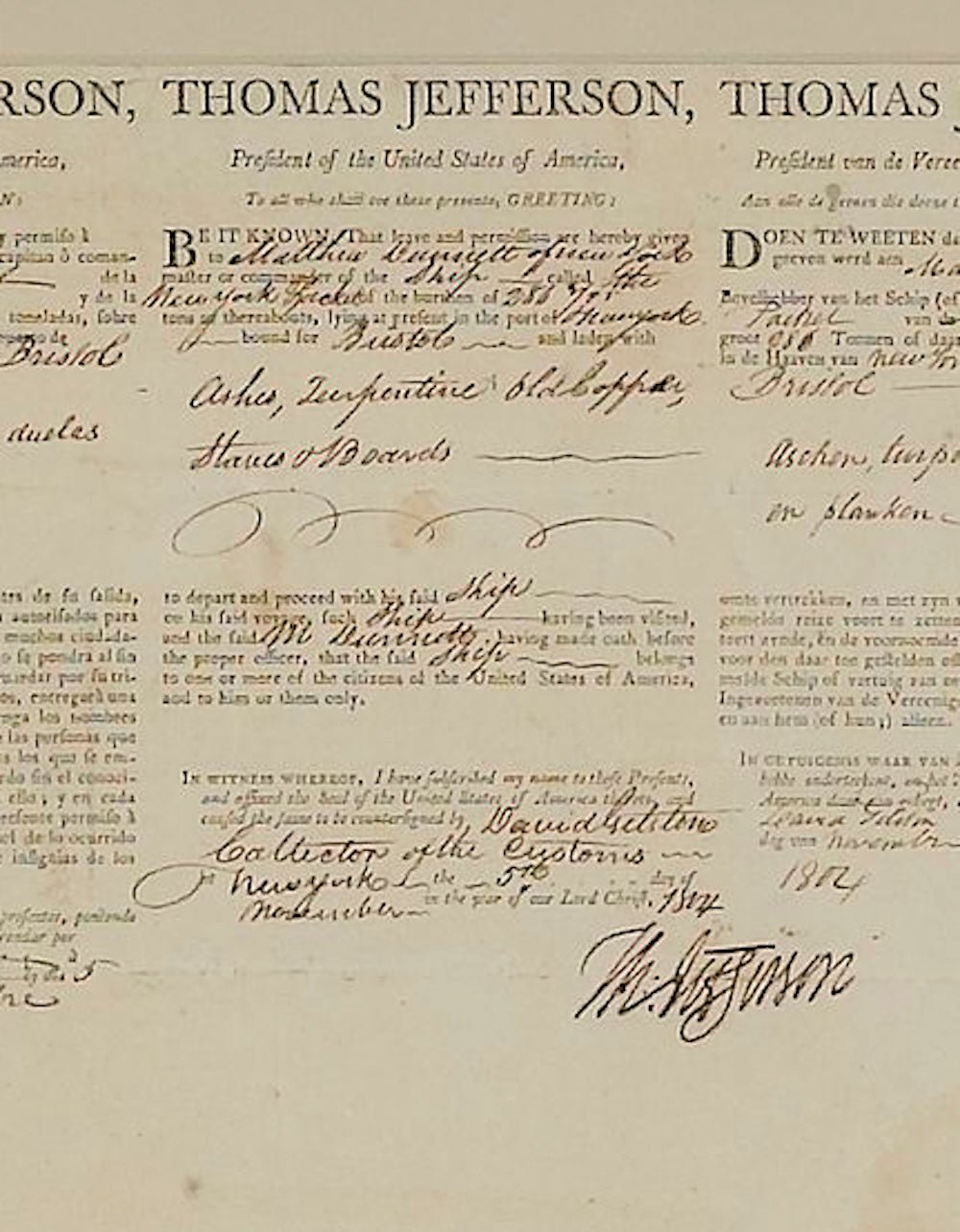
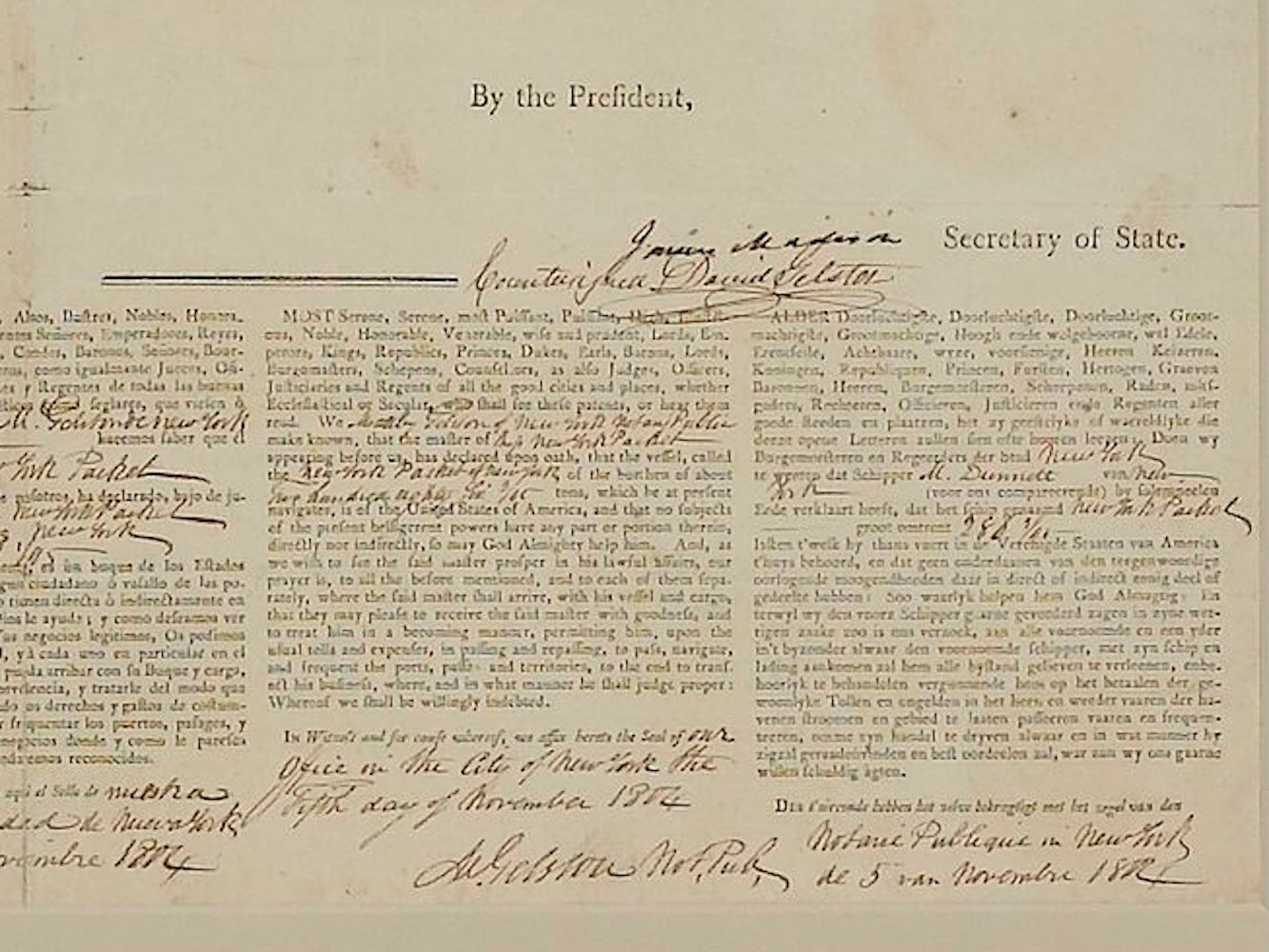
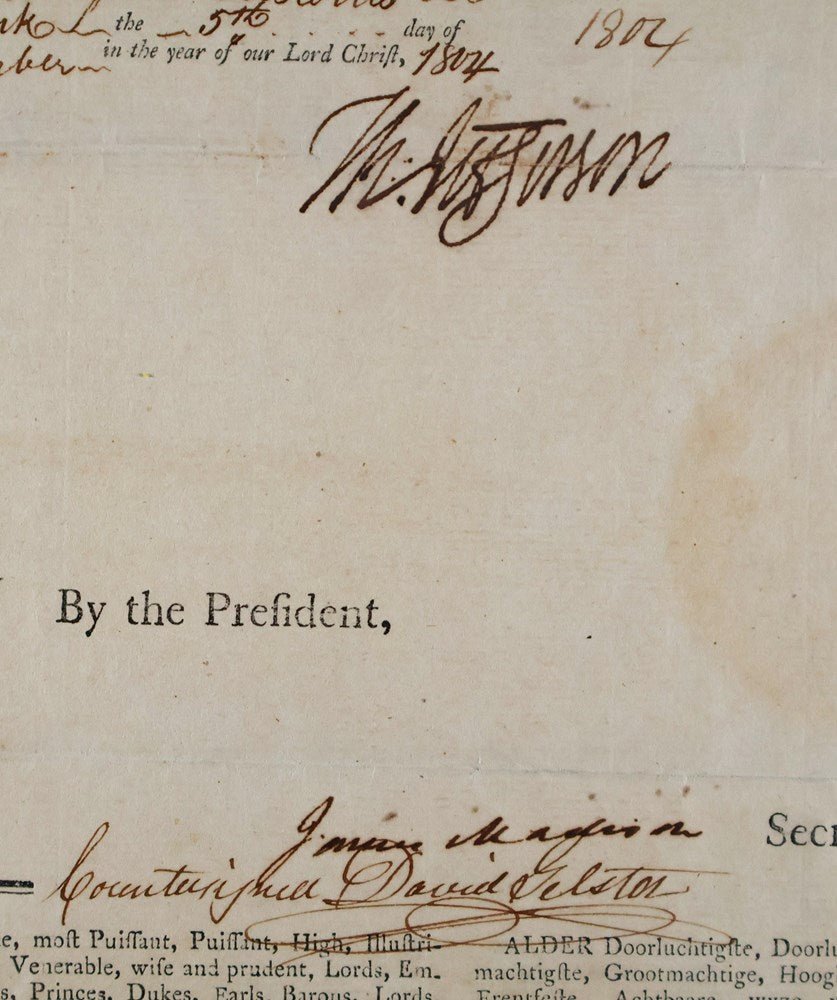
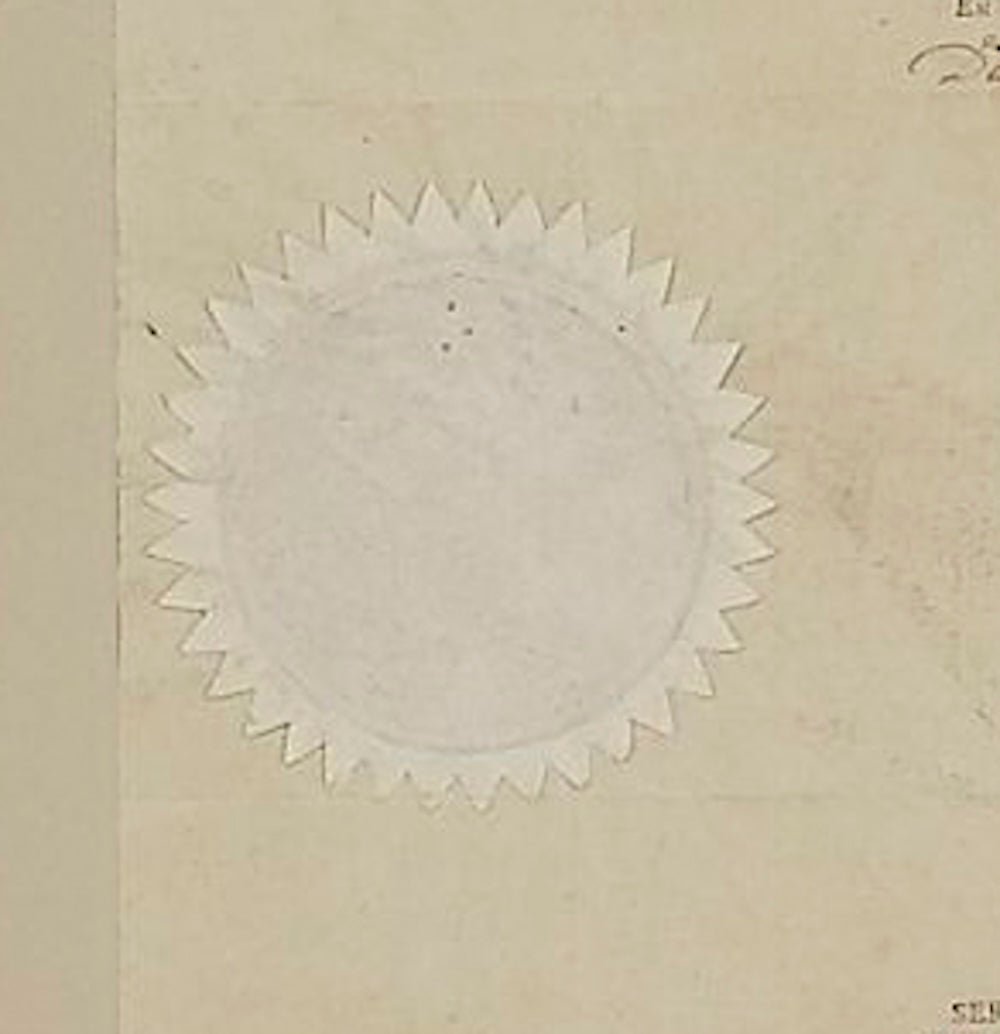
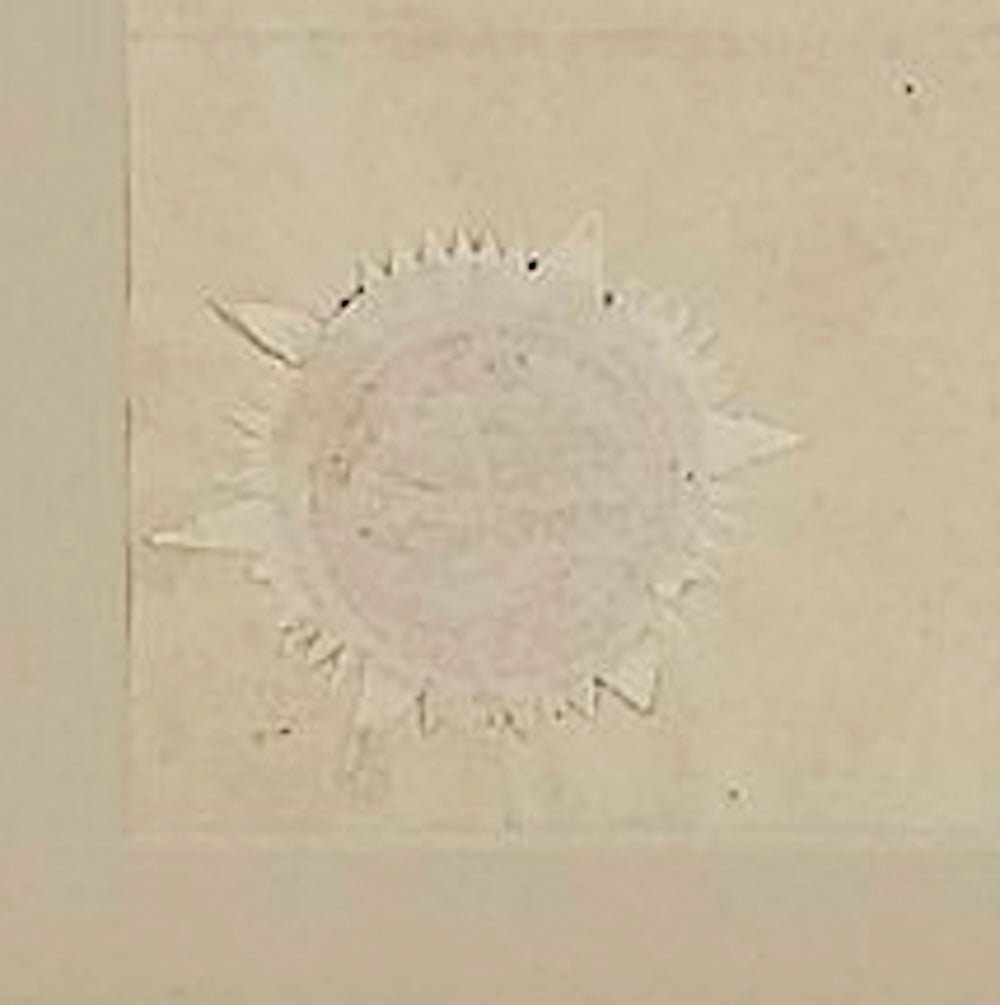
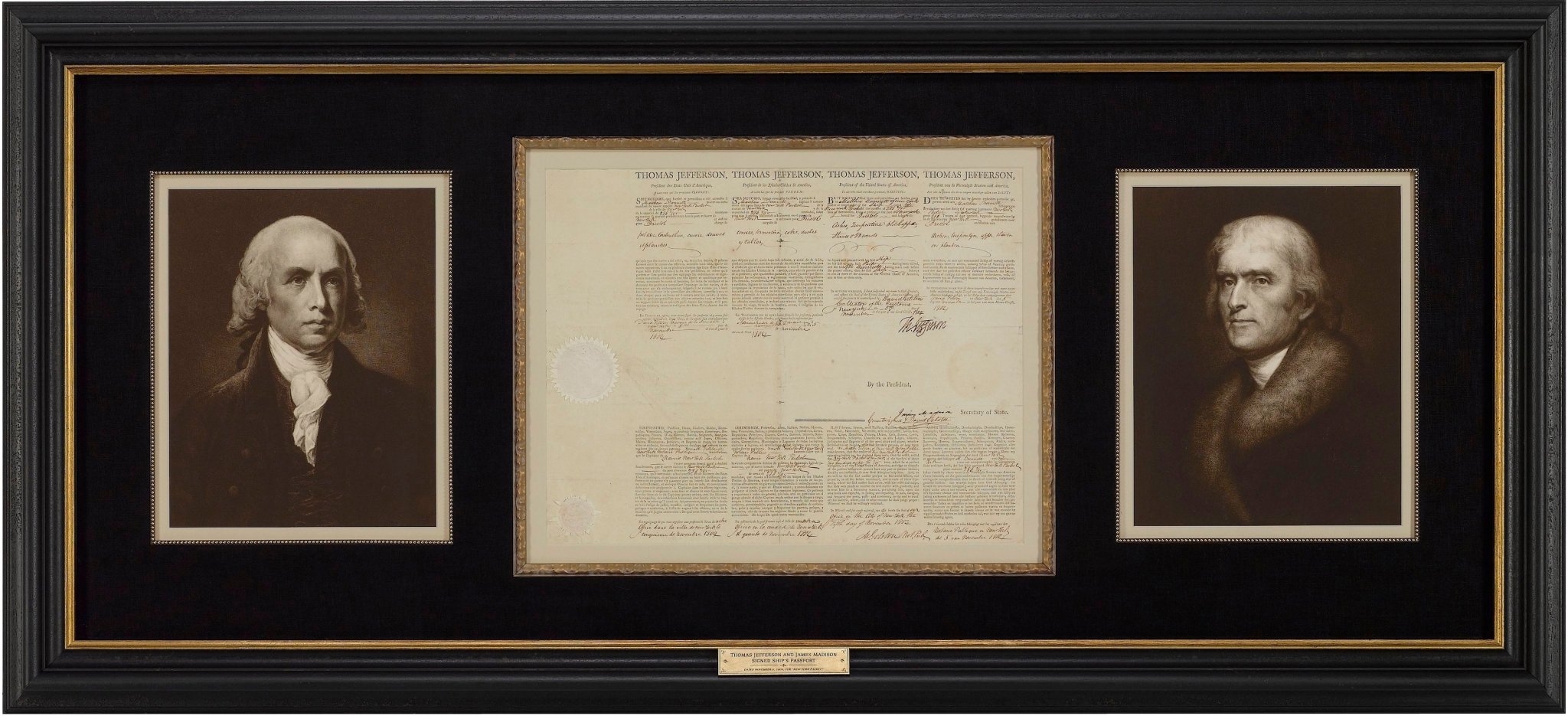
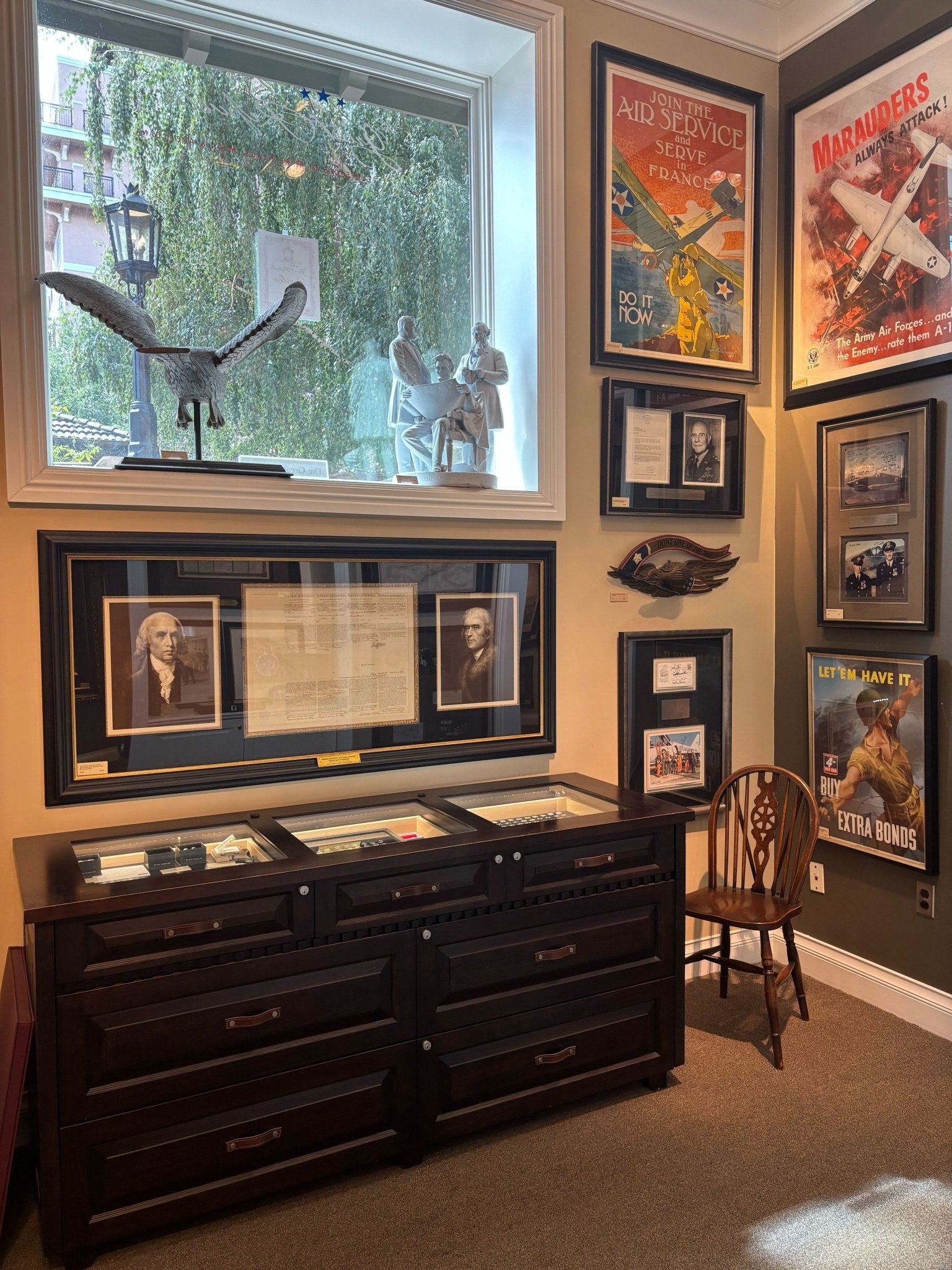
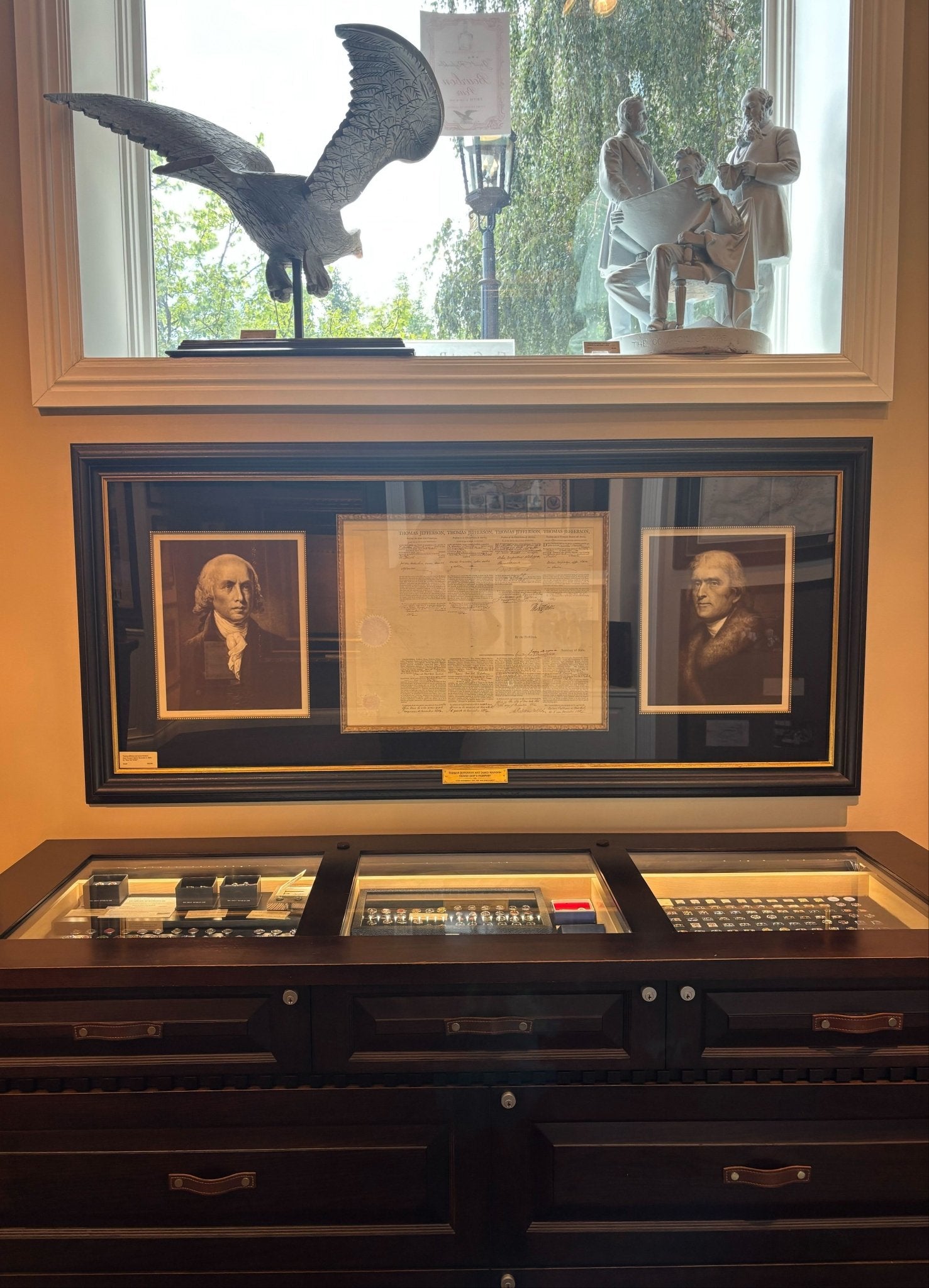
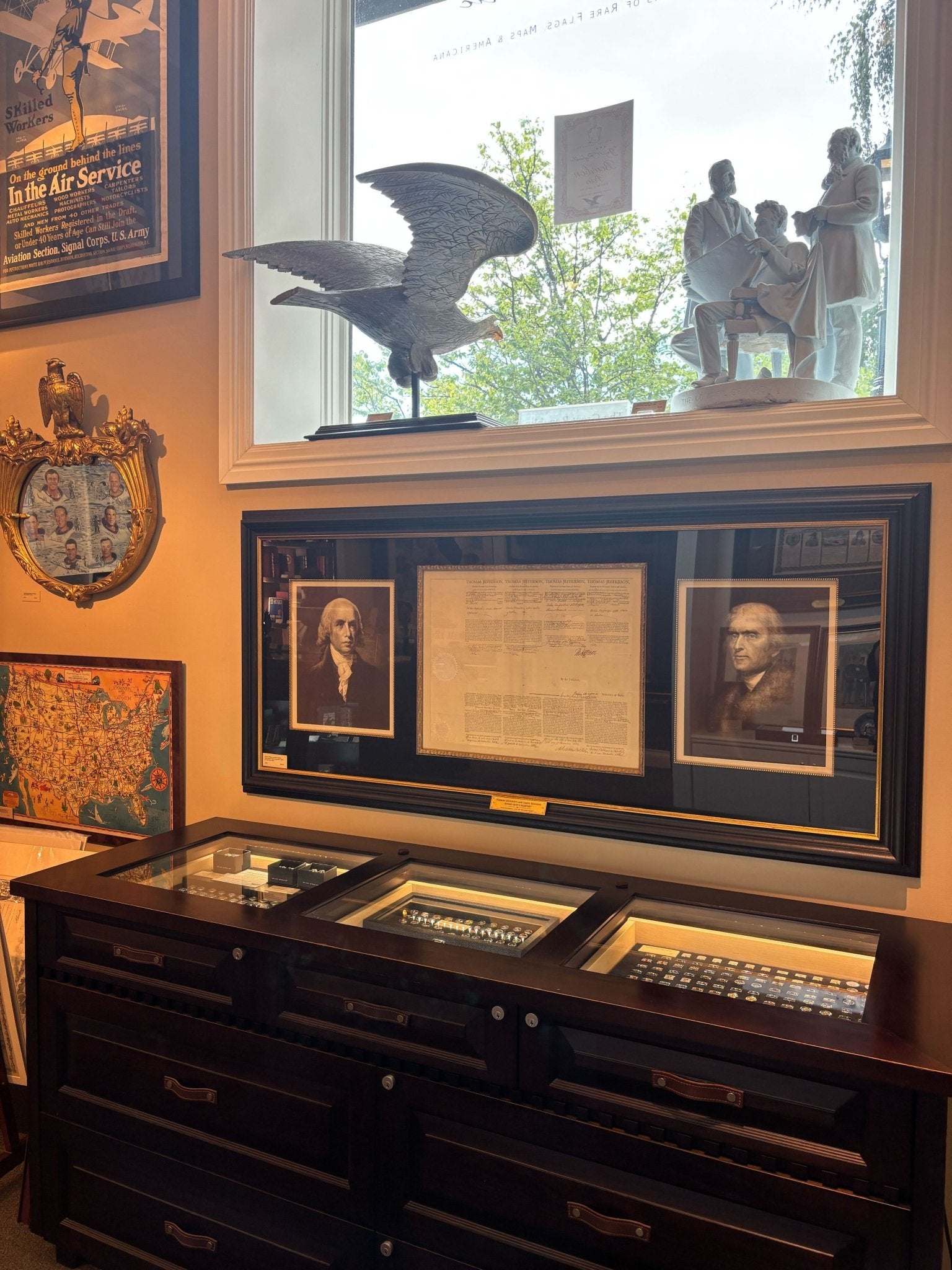
Thomas Jefferson and James Madison Ship's Passport Signed, November 5, 1804, for "New York Packet"
This rare official document, dated November 5, 1804, is signed by both Thomas Jefferson as the nation's third President and James Madison as Secretary of State. The document, partially printed in columns and finished by hand in ink, consists of ship's papers for the New York Packet, then moored in New York and bound for Bristol.
In four columns printed and engrossed in French, Spanish, English, and Dutch is the New York Packet’s manifest. The paper names “Matthew Dunnett of New York” as its "master and commander," identifies its tonnage at 286 3/95 “tons or thereabouts” and cargo as “laden with Ashes, Turpentine, Old Copper, Staves & Boards." It indicates its destination as "Bristol." The document contains oaths that the named ship is owned by “one or more of the citizens of the United States, and to him or them only.”
Along the middle right, the manifest is signed “Th: Jefferson," above the signature of his Secretary of State “James Madison," and is countersigned by “David Gelston” Deputy Collector of Customs. This rare document also contains two embossed paper seals of the United States affixed at middle and lower left. In four columns below are official printed and engrossed requests for safe passage, again in four languages. It asks of those that encounter the ship, and “who shall see these patents, or hear them read” to “please receive the said matter with goodness, and to treat him in a becoming manner, permitting him, upon the usual tolls and expenses, in passing and repassing, to pass, navigate, and frequent the ports, passes, and territories, to the end to transact his business, where, and in what manner he shall judge proper.”
Ship’s papers are documents legally required to be carried by an oceangoing vessel, as a certificate of registry, logbook, and cargo manifest. Ship’s papers have occupied a prominent place in the history of maritime law and in treaties of commerce and navigation. Signed presidential authorization such as this, granting the right to sail the high seas and dock in a country's ports, was a valuable privilege. Before conferring such privilege, officials were required to establish the legitimacy of a vessel, its cargo and its personnel, and the ship's papers were intended to authorize its mission. In the wrong hands, especially during the tense and vulnerable conditions of wartime or, as in the perilous years of America's beginnings, when privateers often seized ships and their cargo, a fraudulent or forged approval could be dangerous. Having presidential-signed ship papers stating your neutrality on the open waters helped offset some of the risk involved in the dangerous yet lucrative trade business.
In February of 1793, France declared war on England. These developments were a source of political and economic trouble for the United States, for while the nation was still formally allied with France under the Treaty of 1778, it was not prepared to take sides in an international conflict. While Washington had issued a proclamation of neutrality, in practice, neither the French nor the British respected that official position, and American ships, especially those carrying provisions, would be harassed and seized by both over the course of the year. Ship's papers such as this were used to establish proof of nationality and guarantee protection for ships. "By providing a statement of American property, signed by the President of the United States … [ship's papers were] intended to confirm our status as a neutral nation, when international conflict put added dangers on America's commerce at sea" (Stein, American Maritime Documents 1776-1860, 113-114).
The official text of such documents was revised several times in 1793, in direct response to the political upheaval caused by the war and the increasingly fraught American trade with the French and British ports and towns. The language of this ship’s paper outlines the very mercantile rights that were routinely abused by an aggressive Royal Navy. The issues of ship seizure, privateering, and impressment were growing points of contention between America and Great Britain in the early 1800s, eventually culminating in the War of 1812.
This is a one-of-kind item, delving into the early American history of maritime law and our trade network with Great Britain during our nascent years as a country.
CONDITION:
Very good condition. 1p. Folio, partially printed, partially inscribed. The document is in much better condition than usually seen, with a large and very bold Jefferson signature, a fine Madison signature, and two intact white paper seals. Document was issued folding, with four horizontal fold lines and one prominent vertical fold. A small chip to the right margin. Wrinkles to documents near paper seals.
Document is archivally framed to the highest standards, with two printed portraits on either side, in a custom built wooden frame with acid-free black mats, gold spandrels, museum glass, and a custom gold leaf plaque.
Framed Dimensions: 30" H x 66" W x 2 1/4" D.
Accompanied by our company's letter of authenticity.
Pickup available at Colorado
Usually ready in 4 hours

Thomas Jefferson and James Madison Ship's Passport Signed, November 5, 1804, for "New York Packet"
Colorado
1 Lake Avenue
Colorado Springs CO 80906
United States
Choose options














Frequently Asked Questions
FAQs
Yes, all of our Antiques are certified authentic. Every antique comes with a signed Letter of Authenticity that details the item’s history, its current condition including any conservation, binding, or framing work, and the item’s provenance. The Letters of Authenticity are priced valuations by our authentication specialists, who assure that items are original and unconditionally guaranteed as genuine for life.
We pack and ship your items from our gallery in Colorado Springs. You may also choose to come pick up your order. Antique items are carefully packed and insured during shipping. The shipping price will be calculated at checkout.
We acquire from a variety of trusted sources all over the world, but mostly through auctions and private collections within the United States. All provenance information will be listed on the Letter of
Authenticity accompanying your purchase.

